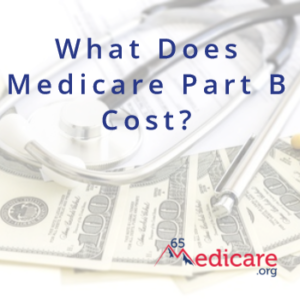 Medicare Part B is the part of Medicare that covers doctors’ visits and outpatient procedures. While Medicare Part A is premium-free (you pay for it through payroll deductions during your working life), Medicare Part B does have a premium. If you are turning 65 in the next 12 months, you may be curious – what does Medicare Part B cost?
Medicare Part B is the part of Medicare that covers doctors’ visits and outpatient procedures. While Medicare Part A is premium-free (you pay for it through payroll deductions during your working life), Medicare Part B does have a premium. If you are turning 65 in the next 12 months, you may be curious – what does Medicare Part B cost?
The short answer is that it can vary. The standard Medicare Part B premium is currently $174.70/month (for 2024). However, not everyone who has Medicare Part B is paying that amount.
Who Pays Less for Medicare Part B?
Medicare regulations include a “hold harmless” provision, which mandates that there be no increase to your Part B premium if there is no “cost of living” increase to Social Security income.
Eventually, once there IS a cost of living increase to Social Security, those people who are paying less for Part B now will be brought up to the standard premium amount. Premium costs will level out for most people on Part B.
That said, there are still some groups who pay a lower premium for Medicare Part B. The qualifications for lower premiums for Part B are based on income/assets, and they vary by state. There are four types of Medicare Savings Programs, including Qualified Medicare Beneficiary Program (QMB), Specified Low-Income Medicare Beneficiary (SLMB) Program, Qualifying Individual Program (QI), and Qualified Disabled and Working Individuals Program (QDWI). You can get more information about each here: Medicare Savings Programs.
Who Pays More for Medicare Part B?
While there are some groups that pay less for Medicare Part B premiums, there are also certain groups of beneficiaries that pay MORE for Medicare Part B. These groups of beneficiaries are based on income, and this is called the Income-Related Monthly Adjustment Amount or IRMAA.
So what does Medicare Part B cost for people with higher incomes? The determination for whether you will pay a higher amount for Part B premiums is based on the tax returns from two years ago. In other words, your 2024 IRMAA determination is based on your 2022 tax returns. The increased monthly premium start at $103,000 in individual modified adjusted gross income or $206,000 for joint modified adjusted gross income.
Here’s the chart from Medicare.gov that shows these increased premium amounts (this is for 2024 and based on 2022 Modified Adjusted Gross Income):
| Single | Married filing jointly | Part B Income-Related Monthly Adjustment Amount | Part D Income-Related Monthly Adjustment Amount |
|---|---|---|---|
| Less than or equal to $103,000 | Less than or equal to $206,000 | $0.00 | $0.00 |
| Greater than $103,000 and less than or equal to $129,000 | Greater than $206,000 and less than or equal to $258,000 | $69.90 | $12.90 |
| Greater than $129,000 and less than or equal to $161,000 | Greater than $258,000 and less than or equal to $322,000 | $174.70 | $33.30 |
| Greater than $161,000 and less than or equal to $193,000 | Greater than $322,000 and less than or equal to $386,000 | $279.50 | $53.80 |
| Greater than $193,000 and less than $500,000 | Greater than $386,000 and less than $750,000 | $384.30 | $74.20 |
| Greater than or equal to $500,000 | Greater than or equal to $750,000 | $419.30 | $81.00 |
Medigap Plans are NOT Medicare Part B
Often, we hear people confuse Medigap plans with Medicare Part B. Part B only comes through the Federal Government’s program. A plan that you sign up for to work with Medicare is NOT a Part B plan, it is a Medigap plan that is designed to work with Part B.
For more information about what Medicare Part B costs or anything else about going on Medicare, you can reach us online or at 877.506.3378.


